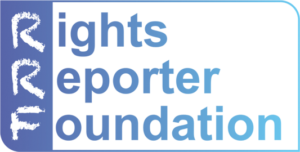Methamphetamine consumption is on the rise in Germany – supplied primarily from the Netherlands and the Czech Republic. But what's behind the recent success of this cheap and addictive substance?
Methamphetamine consumption seems to be becoming more popular in Germany. The number of first time “hard” drug offenders (that is, all illicit drugs other than cannabis and psylocibin) has risen 14 percent in the last year to 21,315 cases, the highest since 2001. Methamphetamine represented 62 percent of the drugs consumed by these offenders in 2011.
 During the same year, 19 illegal drug laboratories were raided by the German Federal Criminal Police Office. Most of them were used for the production of amphetamine and methamphetamine – in one case, on a professional scale. 7,497 (15%) of all “drug dealing crimes” committed in Germany during 2011 were amphetamine- or methamphetamine-related.
During the same year, 19 illegal drug laboratories were raided by the German Federal Criminal Police Office. Most of them were used for the production of amphetamine and methamphetamine – in one case, on a professional scale. 7,497 (15%) of all “drug dealing crimes” committed in Germany during 2011 were amphetamine- or methamphetamine-related.
Furthermore, in 11,243 cases, over 1,400 kilos (17% more than in the previous year) of (meth-)amphetamine were seized, the majority of which was intended for sale on the national market and in neighboring countries. Most of it was being smuggled from the Netherlands or (more often – but in smaller amounts) from the Czech Republic.
In terms of crystal meth, almost 40 kilos (+ 49%) were confiscated, in 2,112 cases (+ 164%) – an all-time record. The largest seizures were in the federal states of Bavaria (49%), Saxony (33%) and Thuringia (10%). The largest quantities of crystal meth were confiscated in Saxony (around 11.7 kilos), Bavaria (11.7 kilos), and Hesse (3.3 kilos). Most of this originated in the Czech Republic.
German media coverage has focussed on crystal meth as the new “horror drug”, but how much does the public really knows about this substance? And is this chemical really as new as it is claimed? The truth is, crystal meth has been known since the 19th century. Back then, it was known as “Pervitin”, and was used during World War II in order to reduce soldiers'́ fear and ease their pain. Up until 1988, it was available as a prescription medicine. But it is also true that crystal meth is a drug which can cause a lot of harm, not only because it can be bought cheaply. Regularly consumed (especially when inhaled or injected) it can quickly lead to psychological dependency. This could be the reason for popular fears about this type of drug, especially in regions near the Czech border. Nevertheless, no reliable research has been done on the spread of crystal meth in Germany. There are no reliable figures on its rate of consumption – only figures which bundle it together with amphetamines or other stimulants.
Watch our video on methamphetamine!
Furthermore, indications from seizure statistics (above) would suggest that this specific drug is generally only a “real problem” in a few regions of Germany. The largest quantities of crystal meth were seized in Saxony and Bavaria, but it needs to be kept in mind that the drug is particularly prevalent in regions near the Czech border, not in Bavaria as a whole. This does not, however, mean that other German federal states will necessarily be affected in the same way.

In the opinion of the German Centre for the Control of Drug Abuse (DHS), action by police or customs will not solve the problem. DHS questions the value of using criminal prosecution as a method of stemming drug use. Thus far, there is no clear evidence that enforcement serves to reduce drug abuse. Moreover, the DHS possesses no valid data on the consumption of crystal meth – an essential pre-requisite for identifying potential solutions.
Last but not least, the DHS is calling for better public education on crystal meth, with such efforts targeted at the most likely user groups. The DHS assumes that young people consume this kind of drug because its effects gives them a sense of energy and control. The DHS argues, that in order to change the drug consumption habits of young people, there first needs to be a change in their values, and their image of success and failure in their life, and the way they spend their free time.
Katharina Grimm




